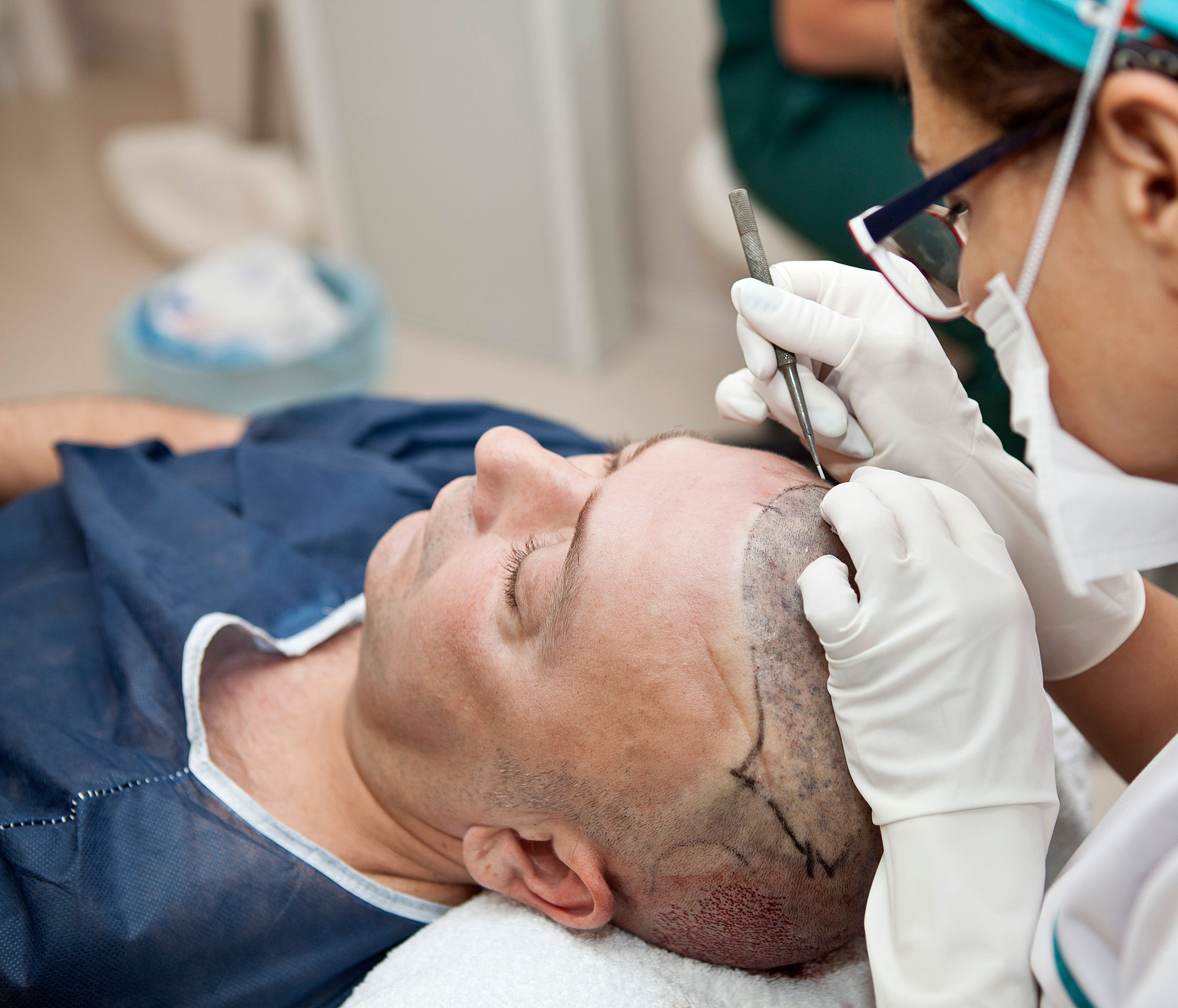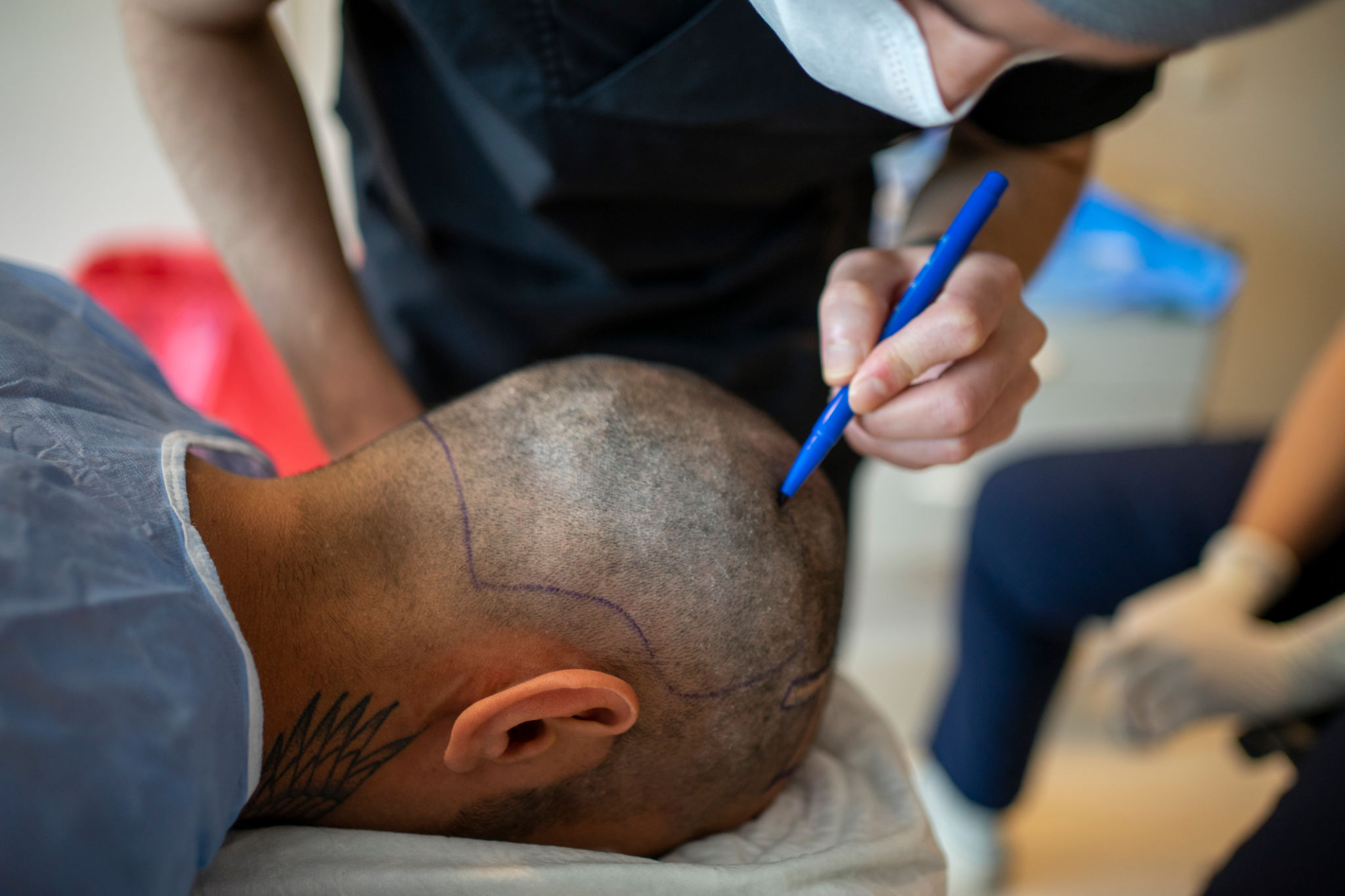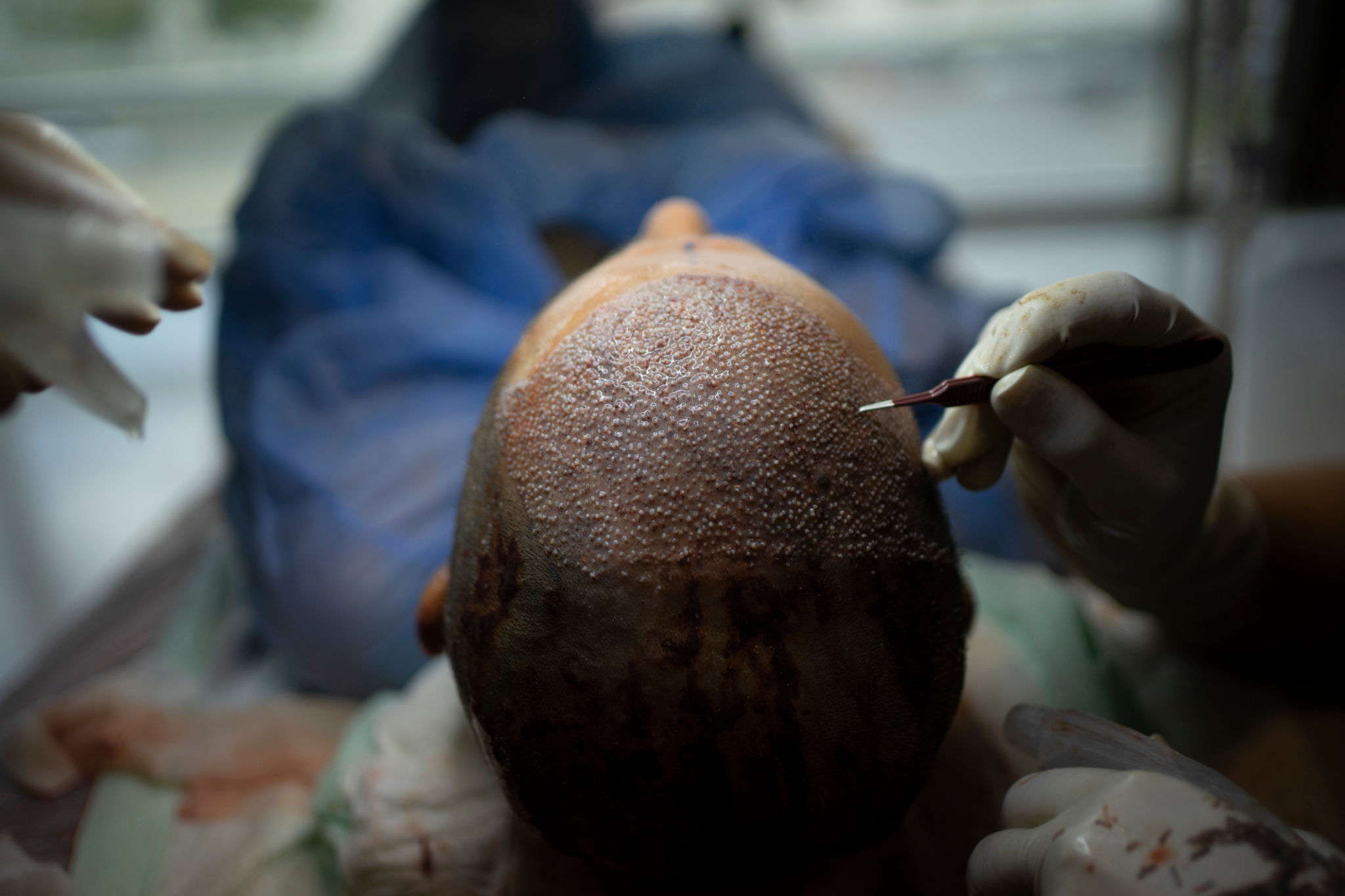What is Hair Transplant
Hair transplantation is a surgical technique that moves individual hair follicles from a part of the body called the ‘donor site’ to bald or balding part of the body known as the ‘recipient site’. It is primarily used to treat male pattern baldness. In this minimally invasive procedure, grafts containing hair follicles that are genetically resistant to balding are transplanted to the bald scalp. It can also be used to restore eyelashes, eyebrows, beard hair, chest hair, pubic hair and to fill in scars caused by accidents or surgery such as face-lifts and previous hair transplants. Hair transplantation differs from skin grafting in that grafts contain almost all of the epidermis and dermis surrounding the hair follicle, and many tiny grafts are transplanted rather than a single strip of skin.
Since hair naturally grows in groupings of 1 to 4 hairs, today’s most advanced techniques harvest and transplant these naturally occurring 1–4 hair “follicular units” in their natural groupings. Thus modern hair transplantation can achieve a natural appearance by mimicking nature hair for hair. This hair transplant procedure is called Follicular unit transplantation (FUT). Donor hair can be harvested two different ways: strip harvesting, and follicular unit extraction (FUE).
Procedures

Scalp Reduction Technique- A scalp reduction technique is performed under local anesthetic in which a large bald area of skin is removed. This leaves a scar on the scalp which later can be camouflaged by grafting directly into the scars.
Scalp Flap Surgery – In scalp flap surgery the entire segment of hair bearing scalp is transferred into a bald area. This is a very uncommon surgery and few surgeons perform it. The risks include improper hair direction at the hairline, as well as the risk of partial or complete loss of survival of the flap and the hair within it.
Treatment
- Transplantation operations are performed on an outpatient basis, and injected local anesthesia, which typically last about six hours.
- The scalp is shampooed and then treated with an antibacterial agent prior to the donor scalp have harvested.
- The donor area that is the back or sides of the scalp as well as the recipient area is made numb with local anesthetic.
- In follicular unit procedure the dermatologist harvests a strip of skin from the posterior scalp, in an area of good hair growth.
- FUT is also called the strip method because here the dermatologist/surgeon harvests a strip of tissue creating a linear scar from one ear to other.
- Most of the surgeons nowadays use the Tricophytic Closure techniques for both the FUT and FUI procedures as it minimizes the visibility of the scar if done correctly.
- Tricophytic Closure camouflages the donor scars from where hair has been transplanted. This involves closing the wound in such a way that the hair near the edge can grow through the scar and conceal it.
- Both the FUT and FUI procedures are conducted under local anesthesia and the patient can go home immediately afterwards.FUT results in permanent and normal hair growth.
- The latest Single Hair Transplantation technique which doesn’t use scalpels and is pain and scar free surgery.In SHT-a single hair follicular unit is extracted and put under the microscope and implanted into the bald region with a SHT implanter. During the transplant a small pen like device is used to remove the follicles after the area has been

desensitilised with local anesthesia. Hair growth is seen after 16 weeks, depending on the part that how quickly the capillaries from around the newly relocated follicular units. SHT delivers the density required for a natural look. If you don’t have sufficiently large donor site at the back of your head, body hair can also be used. The hair which comes is so natural that one can shave it, oil it or shampoo to the new hair and comb it to the desired style. SHT can implant close to 5,000-6,000 hairs in one three hour sitting.
Limitations

The number of sessions will depend on the
- Area of the scalp treated
- The number and size of grafts used.
- The density which the patients desires.
- Coarse hair will provide a denser look than fine hair.
Benefits
- HAIR TRANSPLANTATION has no side effects.
- Restores a natural, more youthful and vigorous look, with potentially positive psychological effects that boost in confidence in you.
- Procedure is permanent. Once the transplant procedures are complete, there is no further necessity for surgery.


